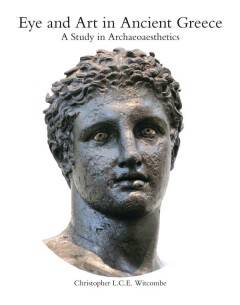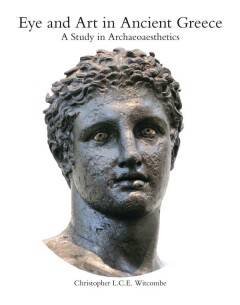
- Afhalen na 1 uur in een winkel met voorraad
- Gratis thuislevering in België vanaf € 30
- Ruim aanbod met 7 miljoen producten
- Afhalen na 1 uur in een winkel met voorraad
- Gratis thuislevering in België vanaf € 30
- Ruim aanbod met 7 miljoen producten
Zoeken
€ 223,95
+ 447 punten
Omschrijving
Eye and Art in Ancient Greece examines the art of ancient Greece through reconstructions of how the Greeks saw and understood the products of their own visual culture. The material is approached using a newly developed methodology of archaeoaesthetics by which past modes of vision and perception are examined in conjunction with prevailing notions of pleasure and judgement with the purpose of identifying the visual and psychological contexts within which the aesthetics of a culture emerge. Through a wide-ranging examination of ideas found in early written sources, the book examines various key aspects of Greek visual culture, such as continuity and change, nudity, identity, lifelikeness, mimesis, personation and enactment, symmetria, dance, harmony, and the modal representation of emotions, with the aim of comprehending how and why choices were made in the conception and making of artifacts. Special attention is given to factors contributing to the formation of taste and the emergence and transmission over time of concepts of art and beauty and the means by which they were identified and judged. The approach facilitates encounters with the material in ways that give rise to new insights into how the ancient Greeks experienced their own visual culture and how Greek art may be understood by us today.
Specificaties
Betrokkenen
- Auteur(s):
- Uitgeverij:
Inhoud
- Aantal bladzijden:
- 256
- Taal:
- Engels
Eigenschappen
- Productcode (EAN):
- 9781909400030
- Verschijningsdatum:
- 28/02/2018
- Uitvoering:
- Hardcover
- Formaat:
- Genaaid
- Afmetingen:
- 226 mm x 284 mm
- Gewicht:
- 1474 g

Alleen bij Standaard Boekhandel
+ 447 punten op je klantenkaart van Standaard Boekhandel
Beoordelingen
We publiceren alleen reviews die voldoen aan de voorwaarden voor reviews. Bekijk onze voorwaarden voor reviews.











